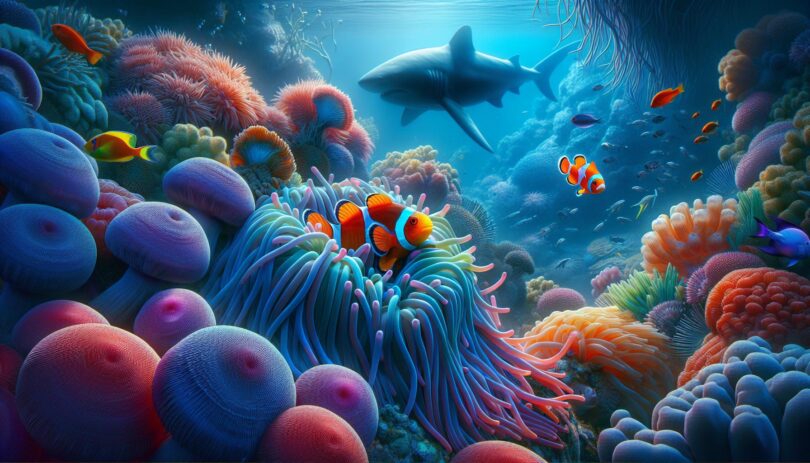Breeding freshwater fish is an adventure that transforms an ordinary aquarium into a vibrant ecosystem. It’s not just about watching fish swim around; it’s about understanding their needs, behaviors, and creating the right environment for them to thrive and reproduce.
I’ve delved deep into the world of aquatics, and I’m here to share my insights on how to successfully breed freshwater fish. From choosing the right species to understanding the intricacies of their breeding cycles, I’ll guide you through the essentials. Let’s dive into the fascinating process of bringing new life into your aquarium.
Choosing the Right Fish Species
When venturing into breeding freshwater fish, selecting the appropriate species is paramount. The fascinating journey begins with understanding fish profiles, which serve as the blueprint for their care, breeding habits, and environmental needs. I’ve learned over the years that not every freshwater fish is suited for beginners, so it’s essential to do your research before diving in.
Firstly, consider the aquarium setup required for the species you’re interested in. Some species demand larger tanks due to their size or activity levels, while others might need specific aquarium equipment to mimic their natural habitat. For example, certain fish thrive with a robust aquarium light and a precisely calibrated aquarium heater to simulate the temperature fluctuations of their natural environments.
Another critical factor is understanding the breeding behaviors and requirements of your chosen species. Many freshwater fish have unique breeding rituals and environmental needs that must be met for successful reproduction. For instance, some species require specific water conditions that can only be achieved by using a high-quality water conditioner for the fish tank and adjusting the tank’s parameters accordingly.
I’ve compiled a table to help you get started with some popular species that are generally considered suitable for breeding in home aquariums:
| Fish Species | Aquarium Tank Size | Breeding Complexity |
|---|---|---|
| Guppies | 20 gallons | Low |
| Platies | 10 gallons | Low |
| Angelfish | 29 gallons | Moderate |
| Betta Fish (Siamese) | 5 gallons | Moderate |
| Cichlids | 30 gallons | High |
Remember, starting your aquarium with the right fish tank filter and other essential aqurium equipment can make a significant difference in your breeding success. Each species listed above requires a tailored approach, emphasizing the importance of knowing your fish profiles and ensuring your setup meets their needs.
Creating a Suitable Breeding Environment
Crafting the perfect breeding environment for freshwater fish is pivotal in your fish-breeding journey. I’ve observed that the more closely an aquarium mimics a fish’s natural habitat, the higher the chances of successful breeding and healthy offspring. Starting your aquarium with this in mind is essential.
Firstly, aquarium tank size matters more than most beginners might think. It’s not just about giving your fish enough room to swim; it’s about providing space for the different stages of their life cycle, including areas for mating and, in some species, separate zones for fry (baby fish). Always refer to the fish profiles for recommended tank sizes to ensure your aquatic pets thrive.
Equipping your aquarium with the right aquarium equipment is another cornerstone of a successful breeding environment. A high-quality fish tank filter is non-negotiable. It keeps the water clean and oxygen levels balanced, both crucial for the health of the breeding fish and their fry. Likewise, an aquarium heater is essential to maintain the ideal water temperature, a factor that can significantly influence breeding behaviors and success rates.
Aquarium light plays a dual role. It not only beautifies the aquarium but also simulates natural light cycles that can trigger breeding in certain fish species. However, it’s vital not to overdo it; too much light can stress the fish and promote excessive algae growth.
Finally, the water chemistry can’t be ignored. Using a water conditioner for fish tank to remove harmful chemicals from tap water is a step I never skip. Regular testing and adjustments to maintain the right pH, hardness, and nitrate levels are practices that have always served me well in creating a conducive breeding environment.
By meticulously planning your aquarium setup, focusing on tank size, and ensuring you have the right equipment, from filtration to heating and lighting, you embark on a journey toward successful freshwater fish breeding. Remember, it’s about replicating nature within your home aquarium, a task that requires knowledge, patience, and a deep understanding of the fish you’re working with.
Understanding Fish Breeding Cycles
When we dive deeper into breeding freshwater fish, it’s essential to grasp the complexity of their breeding cycles. My experience tells me that successful breeding starts with knowledge. Each species follows its own unique cycle, often influenced by seasonal changes, water conditions, and even lighting. Recognizing these cycles isn’t just about when they start but also understanding how to provide an environment that mimics their natural habitat as closely as possible.
Fish profiles play a crucial role here. For instance, some species, like the popular Betta fish or various types of Cichlids, have specific requirements for initiating their breeding process. Bettas need ample space to build bubble nests, while many Cichlids prefer cave-like structures. This is where aquarium setup and choosing the right aquarium tank size become pivotal. A spacious tank, conducive to the fish’s natural behaviors during breeding, significantly increases the chances of successful fry.
Moreover, incorporating the right aquarium equipment is non-negotiable. A high-quality fish tank filter keeps the water clean, maintaining the health of both adults and fry. An aquarium heater is often necessary to keep the water at an optimal temperature, closely replicating their natural tropical conditions. Additionally, the aquarium light plays a subtle yet vital role in simulating the natural light cycles that can trigger breeding behaviors.
The use of a water conditioner for fish tank ensures the water chemistry is just right. It’s about more than just getting the pH levels suitable; it’s about recreating the soft or hard water conditions that some species require for breeding. Regular testing and adjustments ensure the water remains a conducive environment for both the breeding process and the health of the fry post-spawning.
In essence, understanding fish breeding cycles isn’t just about marking calendars. It’s about becoming attuned to the needs and behaviors of your aquatic pets, providing them with an environment that meets their specific breeding requirements. From the initial setup to ongoing care, every step is a piece of the puzzle in fostering a successful breeding environment.
Water Conditioning and Quality
Maintaining optimal water quality is a cornerstone of successful freshwater fish breeding. When I started my aquarium, I quickly learned that each species has unique preferences for water parameters such as temperature, pH, and hardness. Keeping these conditions stable is key to encouraging fish to breed and ensuring the health of both adults and fry.
The first step in water conditioning is using a reliable aquarium heater. It’s not just about providing warmth; it’s about consistency. Fluctuations in temperature can stress fish, leading to decreased fertility. I’ve found that setting my heater to mimic the natural environment of the species I’m breeding significantly impacts their willingness to spawn.
Another crucial piece of equipment is the fish tank filter. Proper filtration ensures the removal of harmful substances and maintains the clarity of the water. However, for breeding purposes, I prefer a filter with adjustable flow settings. High flow rates can be detrimental to fry and can even disrupt the breeding behavior of some fish.
Adding a water conditioner for fish tank is something I cannot imagine skipping. This simple step neutralizes harmful chlorine and chloramine found in tap water, making it safe for aquarium use. Remember, a stress-free environment is conducive to breeding, and ensuring the water is chemically balanced is a big part of that equation.
Lastly, lighting plays a more significant role than many realize. An aquarium light set to a natural day and night cycle stimulates breeding behaviors in many species. It’s not just about visibility; it simulates the passing of seasons which can trigger spawning.
In my experience, diligently monitoring and adjusting your aquarium setup to maintain the highest water quality standards sets the foundation for a successful breeding environment. Adapting your setup, including the aquarium tank size and equipment, to cater to the specific needs of your freshwater fish, is a practice every breeder should adopt.
Feeding and Care for Breeding Fish
When it comes to breeding freshwater fish, feeding them the right diet is as crucial as maintaining the ideal aquarium setup. I’ve learned through years of fishkeeping that a nutritious, varied diet can significantly impact the health and breeding capacity of your fish. High-quality food not only ensures the adults are in prime condition for breeding but also supports the growth and development of the fry.
For breeding fish, I recommend incorporating a mix of live, frozen, and dry foods into their diet. Live foods, such as brine shrimp and daphnia, are particularly beneficial as they mimic the natural diet of fish in the wild and can trigger spawning behavior. Frozen foods provide a convenient way to offer variety without the risk of introducing diseases, which is a hazard with live foods. And high-quality dry foods can be a good staple diet, offering balanced nutrition. It’s vital, however, to select food that is rich in protein and essential fatty acids, crucial for egg and fry development.
Another aspect I can’t stress enough is the importance of water conditions. Using a water conditioner for fish tanks is essential to remove harmful chemicals and ensure the water is safe for both adults and fry. Alongside a reliable aquarium heater and an efficient fish tank filter, maintaining optimal water temperature and quality is non-negotiable. These elements combined create a stable environment that mimics natural habitats as closely as possible, encouraging natural breeding behaviors.
Monitoring and adjusting the lighting with an aquarium light is also critical in simulating natural day and night cycles, further encouraging breeding. Coupled with regular, thorough cleanings and partial water changes, you’re setting a strong foundation for the successful breeding of your freshwater fish.
Throughout this journey, remember that patience and attention to detail are your best friends. Each species has its unique requirements and fish profiles that detail specific care needs, including dietary preferences and water parameters. Keeping informed about the specific needs of the fish you’re breeding is key to their care.
Conclusion
Breeding freshwater fish is a rewarding journey that blends science with nature’s art. It’s about understanding the delicate balance of their environment and providing them with the care they need to thrive and reproduce. From the right diet to perfecting water conditions and lighting, every step is crucial. But beyond the technicalities, it’s the patience and dedication we bring to our aquatic friends that truly make a difference. As we fine-tune our aquariums and observe the wonders of life unfolding, we’re not just fishkeepers; we’re guardians of a fascinating underwater world. Let’s embrace this role with enthusiasm and a commitment to continual learning. After all, the success of our breeding endeavors is a testament to the love and effort we invest in our aquatic habitats.



